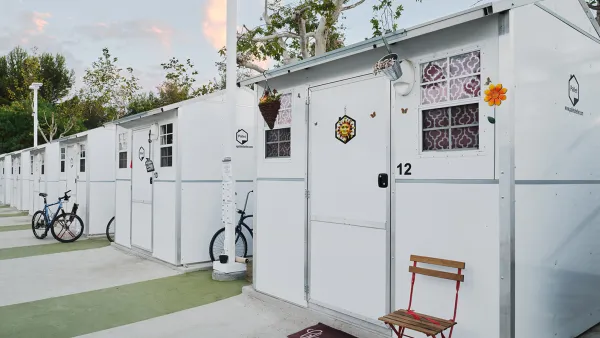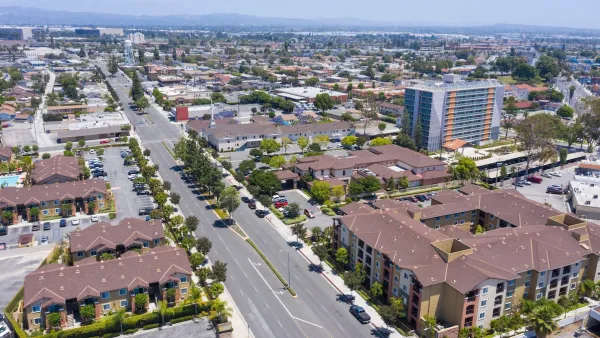Critics of the plan say the effort is a drop in the bucket in a state where tens of thousands of people experience homelessness every night.

“Governor Gavin Newsom announced on Thursday his administration will provide 1,200 tiny homes to cities and counties around California in an effort to shelter unhoused people in the state, which has the highest rate of homelessness in the nation,” according to an article by Chris Nichols and Nicole Nixon for Cap Radio.
The quick-build shelters are viewed as a cost-effective temporary housing solution and have been adopted by some cities as one way to reduce the number of encampments on public property and connect unhoused residents with resources. “The governor said the tiny homes will cost approximately $30 million and would be set up ‘within months, not years,’ estimating they could be open by this fall.” But the authors point out that some ‘tiny home village’ projects in the state have seen delays and cost overruns.
Critics of the plan say it’s only a band-aid for a much larger problem, stemming in part from a lack of clarity about the responsibilities of state and local agencies. “How can local governments address growing homeless camps on state property, such as along freeways, when it’s not their jurisdiction? How can a city provide mental health or addiction treatment services when only county governments are funded to do so?”
To help agencies at different levels coordinate their efforts, “On Thursday morning, the California Association of Counties, CSAC, unveiled its AT HOME plan with the goal of defining those roles for all levels of government.” The plan, which would require state approval to become law, calls on local and state agencies to collaborate on clear definitions of their roles and jurisdictions.
FULL STORY: Newsom administration to provide 1,200 tiny homes statewide, including 350 for the Sacramento region

National Parks Layoffs Will Cause Communities to Lose Billions
Thousands of essential park workers were laid off this week, just before the busy spring break season.

Retro-silient?: America’s First “Eco-burb,” The Woodlands Turns 50
A master-planned community north of Houston offers lessons on green infrastructure and resilient design, but falls short of its founder’s lofty affordability and walkability goals.

Delivering for America Plan Will Downgrade Mail Service in at Least 49.5 Percent of Zip Codes
Republican and Democrat lawmakers criticize the plan for its disproportionate negative impact on rural communities.

Test News Post 1
This is a summary

Test News Headline 46
Test for the image on the front page.

Balancing Bombs and Butterflies: How the National Guard Protects a Rare Species
The National Guard at Fort Indiantown Gap uses GIS technology and land management strategies to balance military training with conservation efforts, ensuring the survival of the rare eastern regal fritillary butterfly.
Urban Design for Planners 1: Software Tools
This six-course series explores essential urban design concepts using open source software and equips planners with the tools they need to participate fully in the urban design process.
Planning for Universal Design
Learn the tools for implementing Universal Design in planning regulations.
EMC Planning Group, Inc.
Planetizen
Planetizen
Mpact (formerly Rail~Volution)
Great Falls Development Authority, Inc.
HUDs Office of Policy Development and Research
NYU Wagner Graduate School of Public Service





























